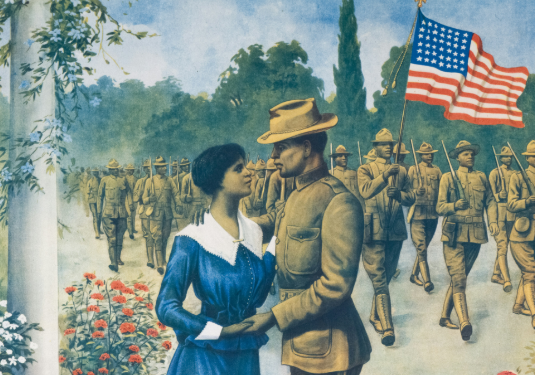The horrors of Josef Kramer setting dogs on prisoners serve as a stark reminder of humanity’s capacity for cruelty. This dark chapter in history compels us to confront our own moral responsibilities. Josef Kramer, often referred to as the “Beast of Belsen,” was a notorious figure in the horrifying landscape of the Holocaust. As commandant of Bergen-Belsen concentration camp, he presided over unimaginable suffering and cruelty. One particularly chilling aspect of his regime involved using dogs to instill fear among prisoners. These animals were not just companions; they became instruments of terror under Kramer’s orders. With their sharp teeth and aggressive training, they played a brutal role in enforcing discipline within the already harrowing environment of the camp.
In this blog post, we will delve into how Josef Kramer wielded these creatures as tools for oppression, exploring their dark training methods and personal accounts from those who witnessed or endured such torment. The psychological scars left on both prisoners and dog handlers provide insight into an era defined by violence and despair. Understanding this grim chapter sheds light on humanity’s capacity for cruelty—and reminds us why history must never be forgotten.
Table of Contents
The use of dogs in concentration camps during World War II
During World War II, dogs became instruments of terror in concentration camps. These animals were not just companions; they were trained to inflict fear and pain upon prisoners.
Handler-dog teams worked closely together, creating an atmosphere of dread. The presence of these fierce canines served as a reminder that escape was futile. Many inmates lived in constant anxiety over the growls and barks echoing throughout the camp.
Dogs were taught specific commands that triggered aggressive behavior. They lunged at anyone who dared to stray from designated paths or questioned authority.
Prisoners often described horrifying encounters with these dogs, recounting how their snarling faces haunted them long after each incident had passed. For many, it wasn’t just physical scars but emotional ones that lingered on through years of suffering and trauma.
The brutality displayed by both handler and dog left deep psychological marks on those unfortunate enough to witness it firsthand.
How were the dogs trained and used to terrorize prisoners?
Training dogs for use in concentration camps was a systematic and cruel endeavor. Handlers employed harsh methods to instill aggression. These animals were often starved, pushing them to associate their handlers with food rewards.
Commands were simple but effective, focusing on aggressive actions toward humans. This created an instinctive response; the dogs learned quickly that fear led to control.
Prisoners faced unimaginable terror as these trained beasts patrolled the camp grounds. Fear permeated every corner of their lives, knowing that any misstep could provoke an attack.
Handlers reveled in this power dynamic, using the dogs not just as tools but as instruments of psychological warfare. They thrived on the helplessness displayed by prisoners when confronted with snarling canines ready to strike at a moment’s notice.
Each encounter left deep scars—both physical and mental—that lasted far beyond liberation from captivity.
Personal accounts of prisoners who witnessed or experienced the brutality of dogs
Many survivors of concentration camps carry haunting memories of their encounters with dogs. These animals were not merely tools; they were weapons of fear.
One prisoner recounted a chilling moment when the barking echoed through the camp, sending shivers down everyone’s spine. The sight of snarling dogs unleashed upon fellow inmates was enough to paralyze anyone with terror.
Another survivor described how these aggressive canines would circle around prisoners, eager for any sign of weakness. Their presence heightened anxiety and despair among those already subjected to unimaginable hardships.
Some recalled hearing the cries of others as dogs lunged viciously, leaving behind scars that went far beyond physical wounds. The impact on mental health lingered long after liberation.
These personal accounts highlight a dark reality — one where fear manifested in every growl and bark, forever etching itself into the psyche of those who endured such brutality.
The psychological impact on both prisoners and dog handlers
The psychological impact of using dogs in concentration camps was profound and multifaceted. For prisoners, the mere sight of a barking dog could evoke sheer terror. These animals symbolized not just physical harm but the complete loss of control over their lives. Each encounter brought waves of despair and hopelessness.
On the other hand, those who handled these dogs often faced their own mental struggles. While some may have taken pride in exerting power over others through their canine companions, many experienced moral conflict. The brutality they controlled seeped into their psyche, sometimes leading to desensitization or deep-seated guilt.
Witnesses recount how the bond between handler and dog became distorted by cruelty. Loyalty that should exist transformed into fear-driven obedience, creating an unsettling atmosphere among both humans and animals alike. This dynamic perpetuated a cycle of violence that left lasting scars on all involved.
The aftermath of World War II and the fate of Josef Kramer
After World War II, Josef Kramer faced the consequences of his actions during the Holocaust. Captured by Allied forces, he was tried for war crimes in 1945. His role as commandant at Bergen-Belsen made him a notorious figure.
Kramer’s trial revealed shocking details about life in concentration camps. Eyewitness accounts painted a grim picture of brutality and suffering that plagued inmates under his watch. The court proceedings captured global attention, shedding light on the horrors of Nazi Germany.
Kramer was executed in December 1945. His death marked a form of closure for many who had endured unimaginable pain at his hands. Yet, questions lingered about justice and accountability for those involved in similar atrocities.
The legacy of figures like Kramer serves as a stark reminder of humanity’s capacity for cruelty and the importance of remembering these dark chapters to prevent history from repeating itself.
Lessons learned from this dark period in history
Education about these events is crucial. Understanding the mechanisms of oppression can prevent similar atrocities from happening again. It emphasizes the importance of standing against hate and intolerance in all its forms.
Empathy is another lesson learned. Recognizing the suffering endured by victims fosters compassion and resilience within society. It challenges individuals to advocate for those who cannot speak for themselves.
Vigilance remains essential. Societies must question authority and resist complacency when witnessing injustices, whether large or small. The past holds lessons we cannot afford to forget; it shapes our collective future, urging us toward a more humane existence free from brutality and fear.
Conclusion
Josef Kramer remains a chilling figure in the annals of history. His use of dogs as instruments of terror exemplifies the brutal tactics employed in concentration camps during World War II. These animals, trained to instill fear and inflict harm, served not only as tools for punishment but also as symbols of oppression.
Reflecting on these events allows us to remember those who suffered while reminding us all about humanity’s capacity for both good and evil. The story serves as a cautionary tale about vigilance against tyranny in any form.































